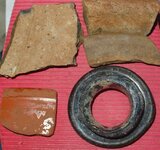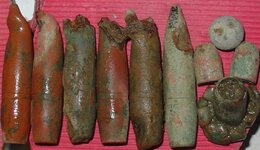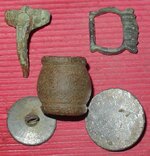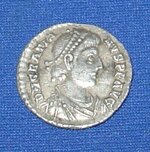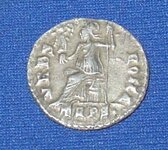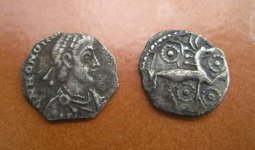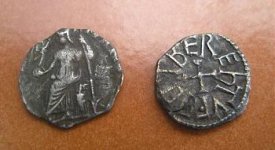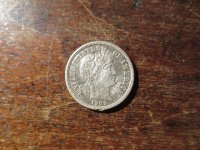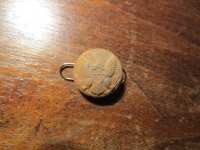CRUSADER
Gold Member
Our first 2 fields were a blind hunt & a blank other than 50 cal bullets. We moved after 1 hour to a very large field that had 3 Archaeological researched crop-marks. Previously the land-owner had no idea about them & he was pretty clued up with all the other 'known' sites on his land including one that's been night-hawked by many detectorists for years. As this is re-establishing an old permission from 2011 which he had forgotten he had given, it was only a 2 day offer. I guess it's hard to gain trust when you have idiots do his land on mass in the day! However, after showing him today's stuff the gate is now wide open. We will see what all the fuss is about after harvest & beat those idiots into the ground, well you know what I mean, they are probably bigger than me but they are not so fast & though, so game on.
We will see what all the fuss is about after harvest & beat those idiots into the ground, well you know what I mean, they are probably bigger than me but they are not so fast & though, so game on.

I got really lucky because the crop-marks seem to be mostly Iron Age, & the last smallest one we tried had the Silver. Never would have found it otherwise.
Never would have found it otherwise.
This takes us to 28 Roman Silver this year, our best year ever.
Did just less than 4 hours;
17th C Applied Bottle Top?
Roman Fibula (Brooch)
14th C Medieval Buckle
Iron Age (Celtic) Bead - Giant one, our biggest example
Silver Siliqua of Gratian AD375 - Our only silver Album example of this Emperor.
 We will see what all the fuss is about after harvest & beat those idiots into the ground, well you know what I mean, they are probably bigger than me but they are not so fast & though, so game on.
We will see what all the fuss is about after harvest & beat those idiots into the ground, well you know what I mean, they are probably bigger than me but they are not so fast & though, so game on.

I got really lucky because the crop-marks seem to be mostly Iron Age, & the last smallest one we tried had the Silver.
 Never would have found it otherwise.
Never would have found it otherwise.This takes us to 28 Roman Silver this year, our best year ever.

Did just less than 4 hours;
17th C Applied Bottle Top?
Roman Fibula (Brooch)
14th C Medieval Buckle
Iron Age (Celtic) Bead - Giant one, our biggest example
Silver Siliqua of Gratian AD375 - Our only silver Album example of this Emperor.
Attachments
Upvote
58


